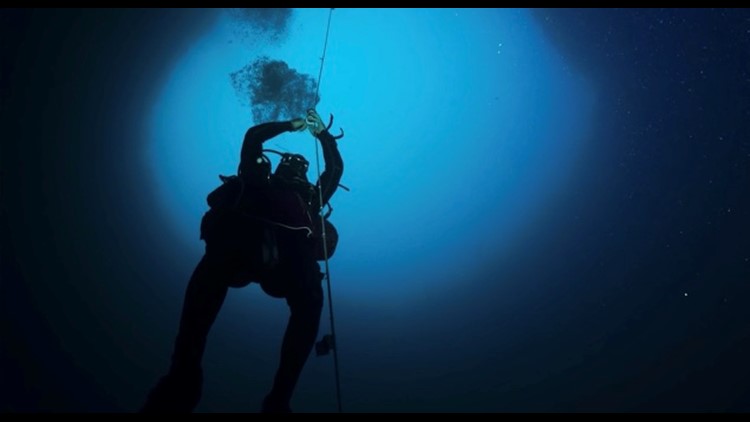Mote is pioneering new research right off the Sarasota coastline in the Gulf of Mexico. They’re studying a phenomenon known as "blue holes."
“We want to understand why? Why are these holes so special?” says Emily Hall, a scientist at Mote Marine Laboratory.
Each blue hole is different, says Hall. Some of these holes look like an abyss. Some of these holes are as big as 100 feet across, and some are the size of a manhole,” says Hall.
They can also be difficult to explore because they are deep up to 500 feet deep. She says, “You have to be a super-certified tech-type diver to go down into these holes.”
Video taken by diver Curt Bowen and Mote scientist Jim Coulter shows the Amberjack Blue Hole 32 miles off of Sarasota. It’s 360 feet deep. More than 40 blue holes have been identified so far. Scientists say there are many more out there.
“These are holes that used to be sinkholes and springs back in the day when there was a lot more Florida out in the water,” explains Hall.
She adds, “These are really unique systems. The chemistry is different from the rest of the Gulf of Mexico: higher nutrients in some holes, carbonate chemicals which are related to climate change and ocean acidification is different.”
But yet Hall says there’s something about them that marine life love.
“We do know they are very diverse. We see big fish, sea turtles, sharks. Around the rim of the hole you see diverse ecosystem, sponges, corals, grasses,” says Hall.
Why are they important to study? “The blue holes are very important to study because they may provide us with insight to what our future ocean conditions might be.”
They might be connected to our groundwater system too.
“Some might be flowing with fresh water, some might not be … that’s something we don’t know, we're trying to find out,” says Hall.
NOAA is funding Mote’s two-year study to research two blue holes. It includes developing new data gathering technology.
Scientist and diver Jim Coulter created the Benthic Lander a metal spider-like looking machine that can be programmed remotely to gather samples over a long period of time at depths divers can’t reach.
Hall says, “We’ll write up some sort of instruction to study these holes so to study other holes out there.”
For scientists like Hall, this research is a once in a lifetime experience. “We are pioneering are of research. We started with a couple of guys exploring these systems started to see how unique they were.”
Halls says the first official dive is in March and the public can come along. They will have cameras and will be communicating during the dive and running a live blog.
►Make it easy to keep up-to-date with more stories like this. Download the 10 News app now.
Have a news tip? Email tips@wtsp.com, visit our Facebook page or Twitter feed.



